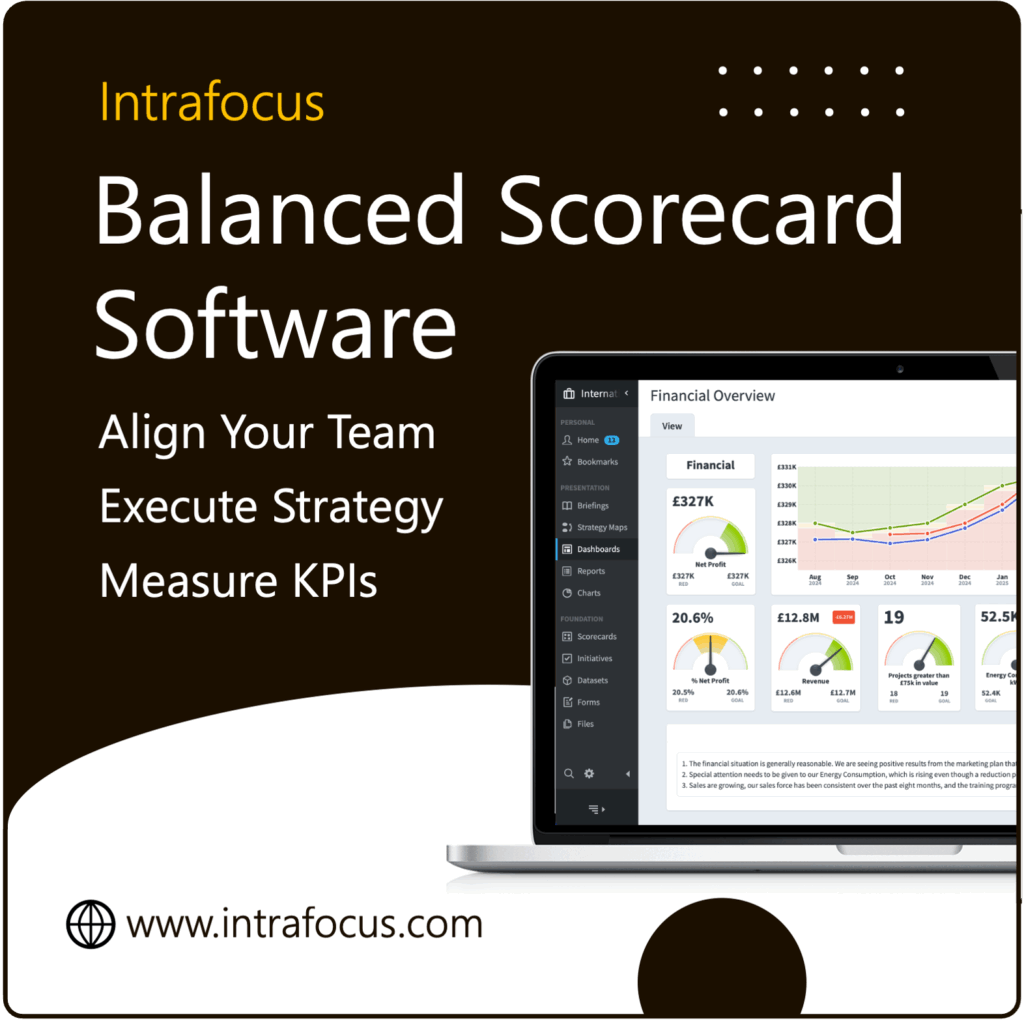Top 15 KPIs – All businesses, large and small, need to have a clear strategy and accompanying KPIs if they are to be successful. Without a guiding vision and purpose, strategic projects and a good management framework, even the smallest businesses cannot expect to be successful.
The core enabler of a successful business strategy is a meaningful set of Key Performance Indicators. Sometimes small businesses do not have the time or resources to select and apply KPIs. Today we’ll look at the topic of KPIs and consider some examples that small businesses could use.
Okay, if you are a follower of this blog, you may be a bit confused. Why think about the top 15 KPIs? We have always advocated that KPIs should be specific to business needs and cannot be ‘taken off the shelf.’ We stand by that. However, it is pretty obvious that for all businesses, there are a set of things that need to be measured; Revenue, Profit, and Customer Satisfaction. These KPIs will always be at the top of the list. Getting a set of measures in place is the point. If they are the wrong measures, this will become apparent quickly. So let’s get started with a definition.
What is a KPI?
A Key Performance Indicator (KPI) is a quantifiable performance measure that tracks the attainment of a strategic objective over time. KPIs measure the progress of organisational performance objectives, rather than individual objectives. They are most typically used to track strategic objectives and goals. (They can also be used to measure repeatable successes of operational goals.) The key features of KPIs are:
- They are quantifiable and can be counted as a value measure
- KPIs are used to track the progress of strategic business objectives, rather than to measure individual performance
- KPIs gauge performance against threshold measures of acceptability, perhaps using the Red, Amber and Green (RAG) system
- They are usually developed using the SMART system (Specific, Measurable, Achievable, Realistic and Time-bound.)
- KPIs can be leading or lagging in nature (see below.)
- They are a vital function and enabler of the business strategy – KPIs in isolation are meaningless and have no value!
Why small businesses need KPIs.
KPIs help businesses to unlock the value of their strategic planning process. The right set of KPIs tells a business whether its strategy is working. KPIs can also be used to communicate progress with stakeholders and to engage staff. KPIs can also be linked with individual performance-related pay and other bonus schemes. They ensure everyone in the business is focused on achieving the strategic plan.
However, it can be daunting to come up with KPIs for the first time, especially if you are a small business with a small management team. The good news is that many KPIs are broadly common across organisations and businesses of all industries. They can be selected and adjusted to suit your own small business needs. Below we have included the top 15 KPIs as a useful starting point. But small businesses don’t need to use them all!
As mentioned in our previous article, 7 plus or minus 2, start with 5 KPIs and build on that.
Just remember that the KPIs you select must link to your business objectives as a function of your overall strategy. If your KPIs don’t measure what you are trying to achieve, they won’t be valuable.
It’s also good practice to use a mix of leading and lagging KPIs. What are these? A leading KPI is a predictive measurement. For example, if you operate a building business, the percentage of workers wearing hard hats on a construction site would be a leading safety indicator. A lagging KPI would measure the output, after the event. In this instance, we might also measure the number of accidents on the same construction site within a given period. The key difference between the two approaches here is that leading KPIs can effect change, and lagging indicators simply record what happened.
Top 15 KPIs for small businesses to consider
1. Net Profit
A simple and easy place to start. Usually tracked every month, net profit is the total revenue minus all expenses. Net profit is a critical financial measure. A healthy business is a profitable one.
2. Net Profit Margin
How much profit earnt compared to the revenue earnt expressed as a percentage: net profit margin = net profit/revenue. This measure includes both net margin and revenue. It is helpful as a year to year comparator.
3. Gross Profit Margin
Unlike net profit, gross profit does not include overhead costs like marketing, sales and administration. Gross profit is total revenue minus the cost to produce a product or service. A high gross profit is a good indicator that a company is likely to make a profit provided other costs are kept under control.
4. Quick Ratio
A company’s ability to meet its short-term obligations with its most liquid assets. This is similar to Cash Flow which is often cited as one of the main reasons small businesses fail. To cover its liabilities, a small business should have enough money in the bank or enough assets that can quickly convert to cash.
5. Customer Acquisition Costs
The money needed to acquire a customer. If you are selling products of a similar value, this is an easy calculation. If you are selling a diverse portfolio of products and services, this is more difficult. This KPI is usually more beneficial for established businesses looking to set a marketing and sales budget.
6. Monthly Recurring Revenue
This KPI is especially useful for companies that sell services or subscriptions. Sometimes, this can be calculated over a rolling six-month period to provide an average monthly recurring revenue. It is helpful to know what level of ‘guaranteed’ income there will be for planning purposes.
7. Customer Satisfaction
One of the easiest or most difficult things to calculate, depending on the industry. In the retail sector, there are sophisticated point-of-sales techniques to capture daily data that can be useful in predicting customer interaction. This could be an annual customer satisfaction survey for low volume services or consultancy sales. In any event, it is imperative to talk to customers.
8. Website Traffic/Interaction
For online businesses, knowing how prospects and customers interact with a website is essential. There are many sophisticated tools to do this. Picking the right metrics can be difficult. The number of daily visitors might be interesting, but is it useful? The click-throughs might be fewer in number but are probably more valuable. The key is to look at trends and identify patterns of behaviour.
9. Social Media Engagement
The number of Facebook or Instagram likes is often a ‘vanity’ measure. Simply counting likes may not tell you what your prospects or customers are really thinking. Social media is useful, especially for brand development, but the key is to count the things that result in engagement. How many click-throughs to website content? How many enquiries were generated?
10. Number of Customers
This might seem obvious, but the number of customers often is not counted! The number of customers is a useful KPI to use as a growth indicator. However, it must be used in conjunction with other measures such as revenue or profit, especially if prices of goods and services vary considerably.
11. Net Promoter Score
Usually used in the retail sector, but of late has been used more widely. Ask the question of your customers “How likely are you to recommend our company to your friends or colleagues?” Rate the answers on a scale from zero to ten, where zero is highly unlikely, and ten is highly likely. Word of mouth, or recommendation, always results in the easiest follow-on sales.
12. Customer Complaints
Almost the converse of net promoter score and customer satisfaction is customer complaints. However, if a customer complaint is dealt with quickly and efficiently, it will result in a happy customer. Also, customer complaints are valuable free, useful information to help improve products and services.
13. Employee Satisfaction
Happy employees will almost always ensure happy customers. And this is not only in the retail and service industries. Happiness at work is often derived from a belief in the products or services being sold.
14. Employee Retention Rate
It costs a lot to hire good staff. Especially when the required skills are high or extensive training is required. A decreasing employee retention rate is an indication that something needs to be improved. Usually in working conditions or associated with repetitive or tedious tasks.
15. Energy Consumption
Energy consumption is illustrative of several ‘new’ KPIs related to the environment. As a matter of course, many customers and employees check out environmental credentials. We like to buy from or work for companies actively engaged in Green activities. Energy consumption is a ‘green’ KPI that presents the right image and drives cost savings.
Getting your KPI process in place
To be successful with KPIs it’s important to formalise your process. This ensures that your KPIs remain a priority for the business and that they are monitored and reported against in a timely way. Without a clear process in place, it’s all too easy to let KPIs fall behind daily operational activities and then risk losing their value entirely.
To make this process as simple and effective as possible, it’s helpful to use a software package such as Spider Impact. These systems are designed to automate KPI management as much as possible. They make it easy to track data in real-time, produce rich, custom reporting and enable managers to see where the business KPIs stand at any time. Systems such as Spider Impact also improve accuracy and save significant time for the business, whilst helping decision-makers to access the information that they need to drive the strategy forwards.
Find out more
Intrafocus works with businesses and organisations of all sizes to help them develop their strategic planning process. Our consultants work with small businesses across all industries to help them achieve strategy success, whatever stage they might already be at. We work flexibly with your needs and usually begin with a strategy workshop for your small business decision-makers. Please contact us for a no-obligation chat.



